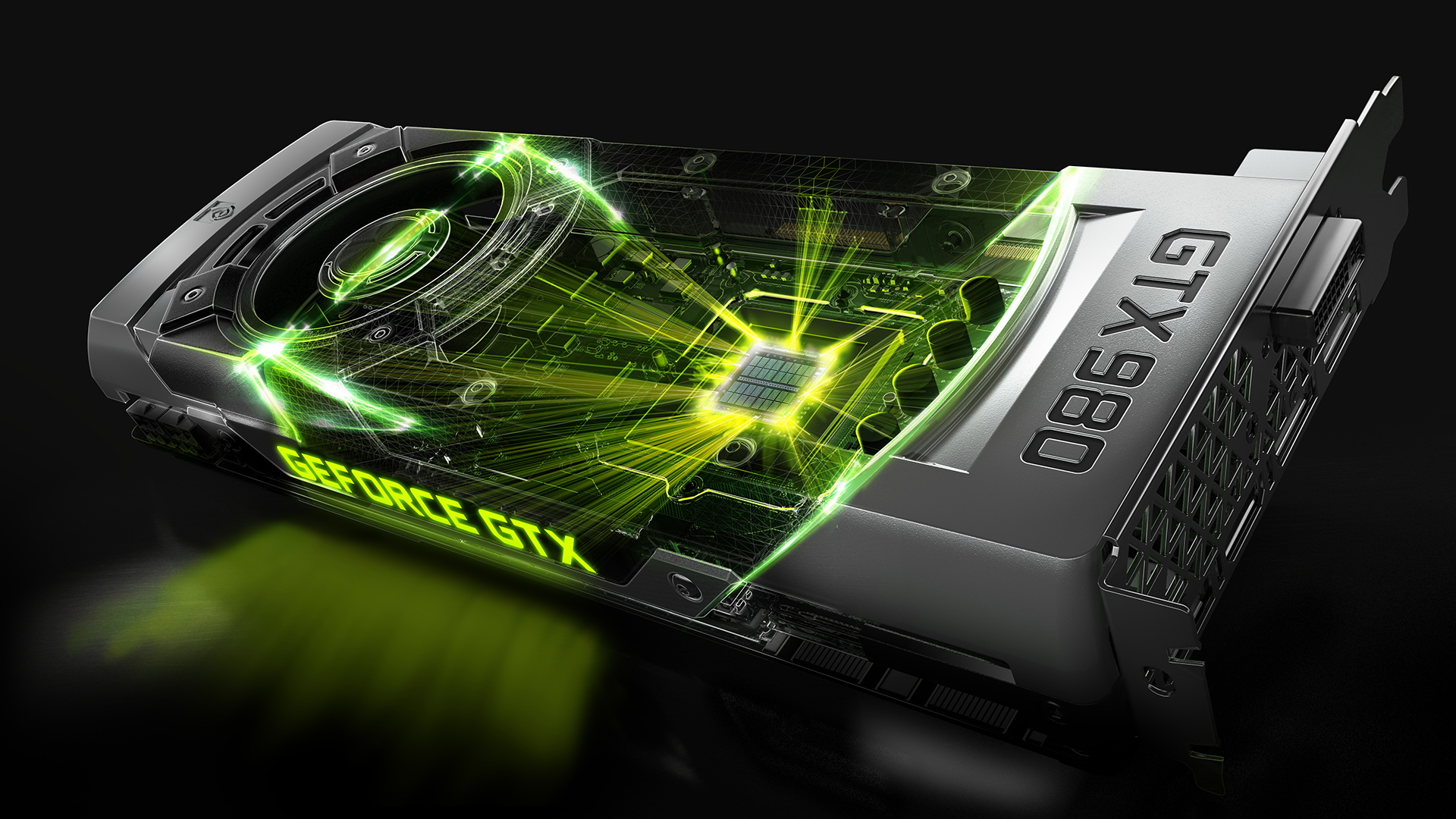Nvidia unveils GeForce GTX 980 and 970 GPUs with an eye towards VR
Keep movin' Kepler, it's Maxwell's time to shine

Enthusiast PC builders unprepared to part with their money may not want to read the next sentence. Nvidia has announced the first line of high-end GPUs to take advantage of the energy-efficient, designed-for-virtual-reality Maxwell architecture - the new GeForce GTX 980 and 970.
Nvidia made the announcement at Game24, an international celebration of everything PC.
So what makes Maxwell top dog? Nvidia claims that a new anti-aliasing technology called Multi-Frame Sampled Anti-Aliasing can produce a 4x multisample anti-aliasing image at 2x MSAA speeds. This, coupled with the ability to produce 4K images and downscale them to native resolutions, mean we'll see an even cleaner images in a fraction of the time.
The GeForce GTX 980 and 970 are also the first two GPUs from Nvidia built with virtual reality in mind.
"We built Unreal Engine 4 using Nvidia's Kepler architecture but the GTX 980 and 970 GPUs, based on the new Maxwell architecture, are the most powerful, efficient GPUs for creating scenes of unprecedented detail across PC and VR experiences right now," said Tim Sweeney, founder and CEO at Epic Games, in a press release. "Our developers are pushing the graphical high end with Maxwell GPUs."
Virtual ties
The GPUs include a new feature set called VR Direct, designed to optimize VR games with high-frame rates and low latency.
VR Direct works with goggles like Oculus Rift to create 3D experiences on PC titles, including a few new ones on hand at Nvidia's Game24 event.
Get daily insight, inspiration and deals in your inbox
Sign up for breaking news, reviews, opinion, top tech deals, and more.
Developers can use the SLI to assign multiple GPUs to each eye, and a feature called Asynchronous Warp reduces latency by half. With VR Direct, images rendered with the new GPUs will adjust as gamers move their heads without having to re-render, reducing the stutter effect sometimes experienced when wearing fledgling VR headsets.
The platform is compatible with a number of VR devices, but it also lets gamers play titles on headsets that weren't originally made for truly immersive worlds.
Cuda is king
If you remember the launch of Maxwell, Nvidia was keen to point out it delivers 35% more performance per Cuda core on shader-limited workloads. The scariest part of all? Processor-intensive games like Metro: Last Light may actually run faster than 30fps on ultra settings using the new cores.
The GTX 980 and GTX 970 GPUs are available starting today from the usual suspects (Asus, EVGA, Gigabyte, MSI, PNY...) and should start popping up in boutique machines before long.
Pricing is expected to begin at $549 (about £333, AU$600) for the GTX 980 and $329 (about £200, AU$365) for the GTX 970.
- Interested in a top-performing machine in a pint-sized package? Check out our review of the Digital Storm Bolt II!